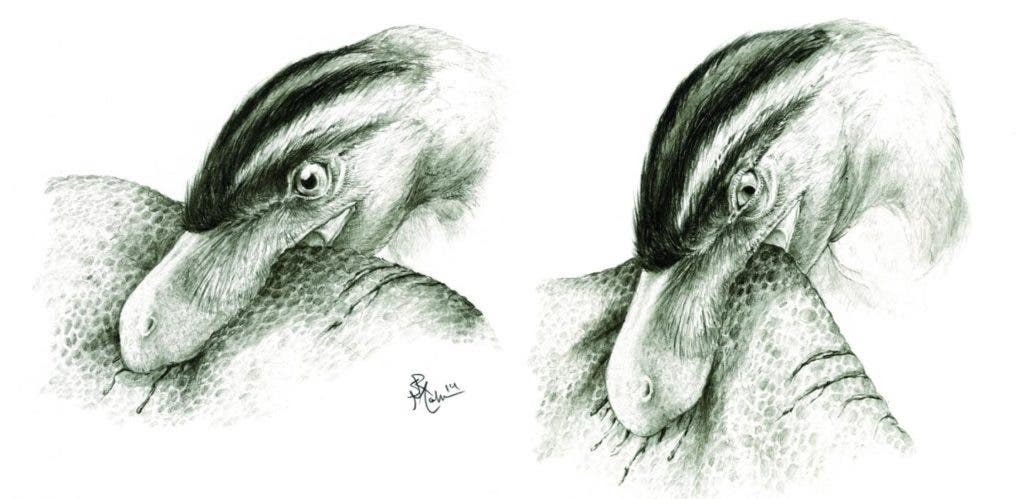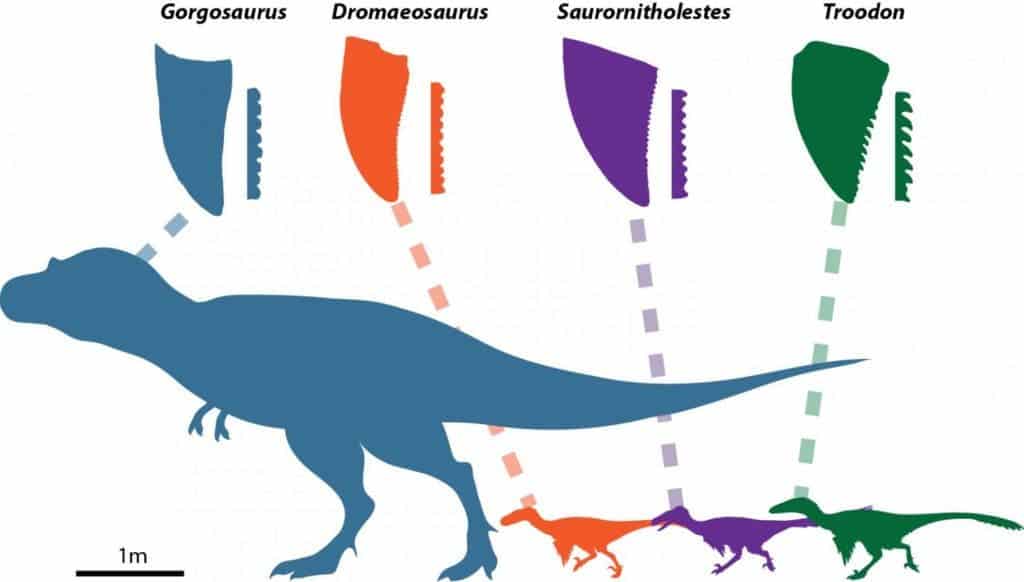
This illustration shows puncture-and-pull feeding in predatory theropod dinosaurs, based on the results of the researchers’ microwear analysis and finite element analyses. Credit: Sydney Mohr.
There’s a lot you can learn about a dinosaur from their teeth alone. Predatory, bird-like theropod dinosaurs, for instance, all used a puncture-and-pull bite strategy to kill and devour their prey. However, an international team of researchers analyzed the wear and various denticle shapes of such dinosaurs, concluding that some of these predatory dinosaurs were more suited for larger, struggling prey, while others preferred to handle softer, smaller prey.
It’s all in the teeth
Angelica Torices, the lead author of the new study and a postdoc at the University of Alberta, Canada, has always been interested in carnivorous dinosaur teeth. At first, her work involved matching dinosaurs species with various teeth. Later, the main question surrounding her work moved from ‘who’ or ‘why.’
Previous studies, typically performed on mammals, were able to infer biting movements and types of diets simply by studying the scratches and pits on teeth. Torices and colleagues decided to do the same for the two types of predatory coelurosaurian dinosaurs — bird-like therapods that lived during the Upper Cretaceous between 100 million and 66 million years ago.
The analysis showed that all coelurosaurian dinosaurs bite in the same way through a puncture-and-pull system, but troodontids and dromaeosaurids may have preferred different prey. Specifically, troodontids apparently favored requiring lower bite forces in comparison to dromeosaurs.
“The fact that there was a shape that was more widespread than the other two led me to think that, maybe, there was a difference in efficiency between those different denticle shapes so I decided to test it. It was challenging because nobody had looked at that particular problem before in carnivorous dinosaurs so there was not much literature about it,” Torices told ZME Science.

This figure shows different theropod dinosaurs, their teeth, and their different denticle shapes. All teeth are scaled to the same crown height for comparative purposes. Credit: Victoria Arbour.
At first, Torices examined the microwear of various dino tooth fossils, looking for any pattern that might give off what the owners of the teeth were eating. Then, Torices and colleagues at the University of Alberta employed a finite element analysis — a numerical method for solving problems of engineering and mathematical physics — to see how the denticles and the tooth behaved under different cutting angles.
“I was very surprised how the finite element analysis confirms the results of the microwear analysis. It shows that the three types of denticles are optimized for the cutting angle employed during the ‘puncture-and-pull’ mechanic. However when these teeth were biting at non-optimal cutting angles the three denticle morphologies behaved differently regarding stress,” Torices told me.
Dromaeosaurus and Saurornitholestes were well adapted for handling struggling prey or for processing bone as part of their diet. Meanwhile, Troodon teeth were more likely to fail at awkward bite angles, which suggests they must have gone for softer prey such as invertebrates. Now, all of a sudden, we know that some groups of predatory dinosaurs — despite living during the same time and sharing the same ecological niche — weren’t likely in direct competition for the same prey. Not bad for some teeth.
“We have a lot to learn from teeth! Through these carnivorous dinosaur teeth we have been able to infer how they were biting and what type of prey they would be eating and the results show us that probably there were aiming for different food resources. Now we are working with more complex models including not only teeth but also roots and jaws to understand the interaction of all elements during the biting process,” Torices said.
The findings were reported in the journal Current Biology.









